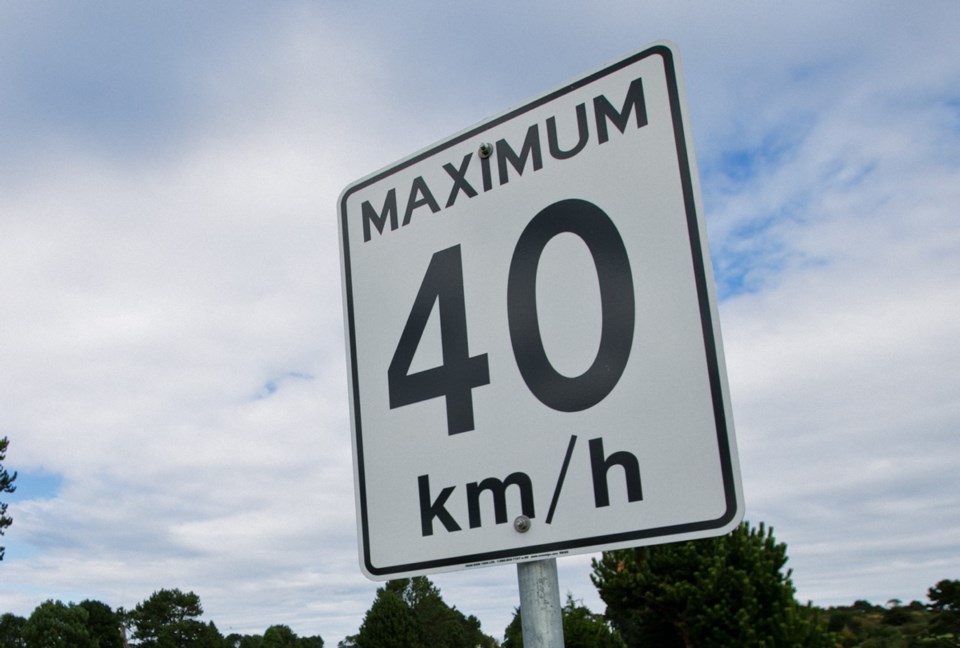Vancouver Coun. Pete Fry’s call to lower municipal speed limits to 30 km/h could be in for a bumpy ride if it makes it to the Union of B.C. Municipalities convention floor, says Victoria Mayor Lisa Helps.
In 2013, Victoria was unsuccessful in a bid to have the UBCM endorse a default municipal speed limit reduction to 40 km/h, from 50 km/h.
“It will be very, very interesting to see how, if at all, public opinion at the UBCM has shifted,” Helps said, adding that Victoria’s bid was met with “a giant no.”
Victoria’s 2013 campaign was led by Shellie Gudgeon, who has since left council, and Ben Isitt, who is still a councillor.
“We got thumped,” Gudgeon said of her and Isitt’s efforts at the UBCM, adding that she still supports the lower speed limits and hopes attitudes have changed in the past six years.
Although they didn’t win UBCM support, Gudgeon and Isitt were successful in bringing about changes to Victoria’s streets and traffic bylaw reducing speed limits on several city streets to 40 km/h from 50 km/h.
The city also reduced the speed limit on Cook Street between Southgate and Dallas Road to 30 km/h from 50 km/h. The objective was to improve safety and reduce the number of collisions.
In his Vancouver motion, Fry is looking for support from his council in calling for the default municipal speed on local streets to be reduced to 30 km/h from 50 km/h.
Fry wants the City of Vancouver to present a resolution to the UBCM convention in September and lobby the province for the lowered limit, while at the same time giving individual municipalities the power to increase speed limits along some streets on a case-by-case basis.
Gudgeon said Fry might have more success if he was proposing a reduction to 40 km/h instead of 30 km/h.
Helps, whose re-election campaign last year included a call for a reduction in local speed limits to 30 km/h, said she certainly supports lower default speeds on local streets.
“I think it should be not slow on Douglas and Blanshard and busy streets going out of town, obviously,” she said.
The cost benefit of having the default speed set at the lower limit is a reduction in the need for signage. Helps agrees that a reduction to 40 km/h might get more support at the UBCM.
“When we do go and make all of those streets 30 km/h it’s a heck of a lot of signs that have to go up. But if the default is 30, or 40 — and I think 40 might probably have more success — then anything other than that needs to be signed and that sends a different kind of signal.”
Helps’ call to reduce the speed limit on residential streets is now part of the city’ strategic plan as a 2021 action item and Victoria councillors have agreed to hire two people — a neighbourhood transportation engineer and a neighbourhood transportation technician — to work with community representatives on traffic calming initiatives.
Lower speed limits, Fry said, would create “safer, better engaged, healthier and more inclusive communities.”
A pedestrian’s chance of survival is about 90 per cent if hit by a vehicle travelling at 30 km per hour, according to ICBC. That drops to as low as 20 per cent if the vehicle is moving even 20 km/h faster.
Fry is also looking for his city to test the speed-limit change to collect data before and after, and determine if road design changes are needed.
His motion follows similar calls made by the government’s B.C. Road Safety Strategy, the Provincial Health Services Authority, and the Road Safety Law Reform Group.



